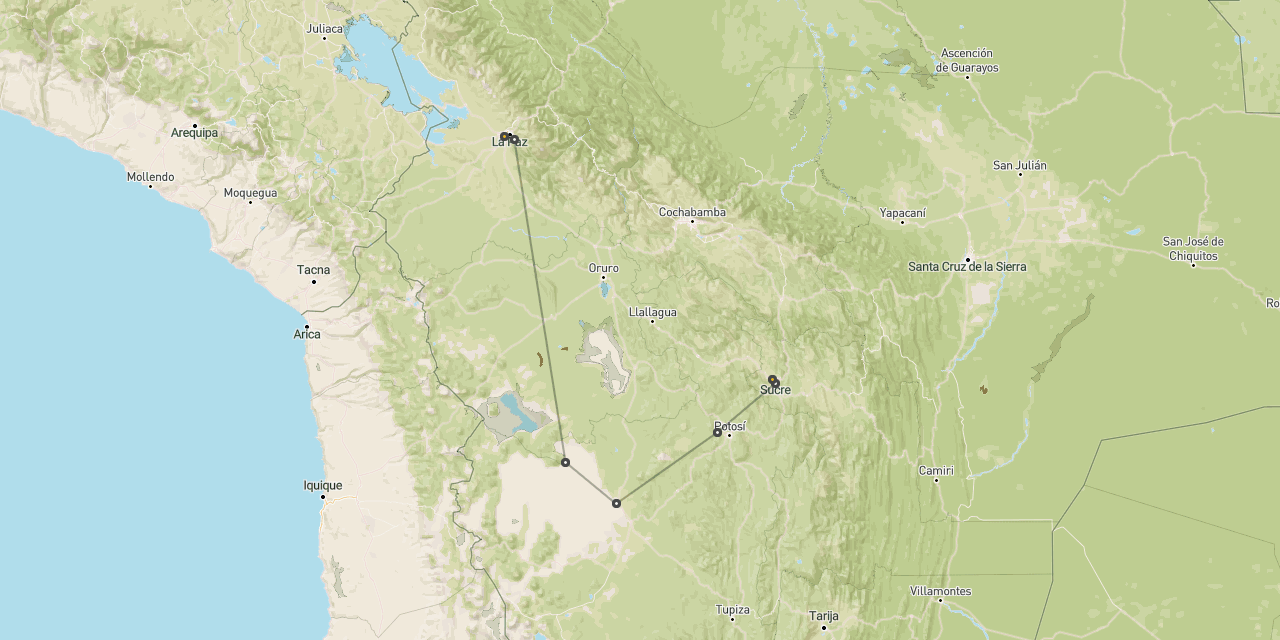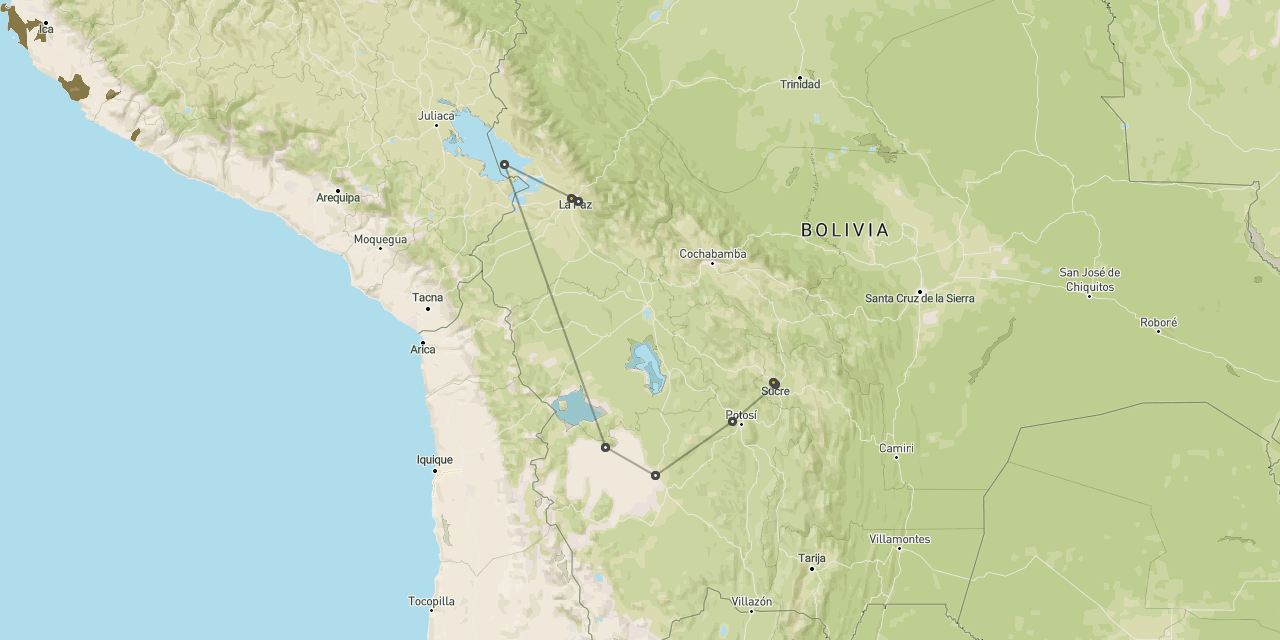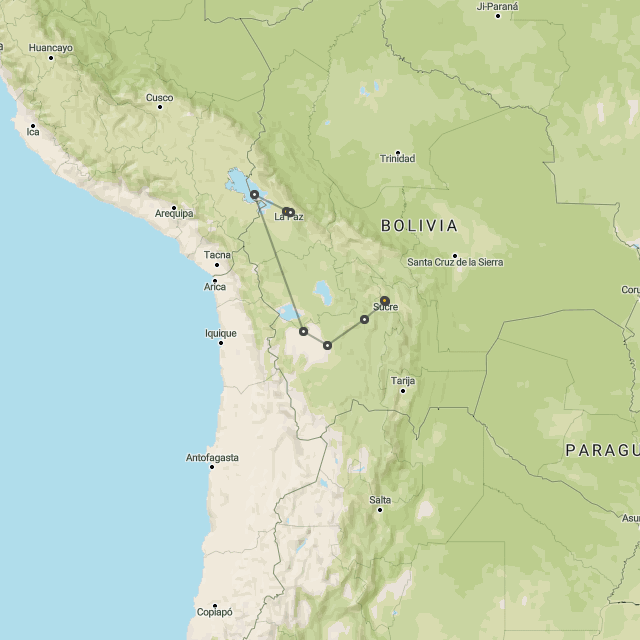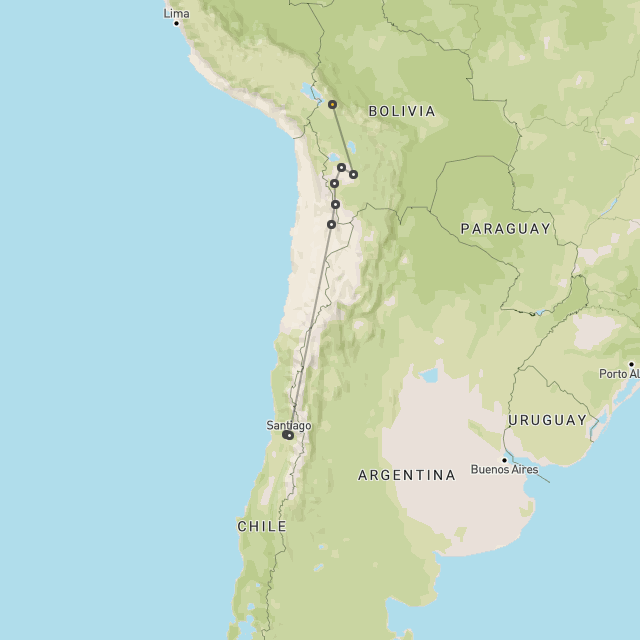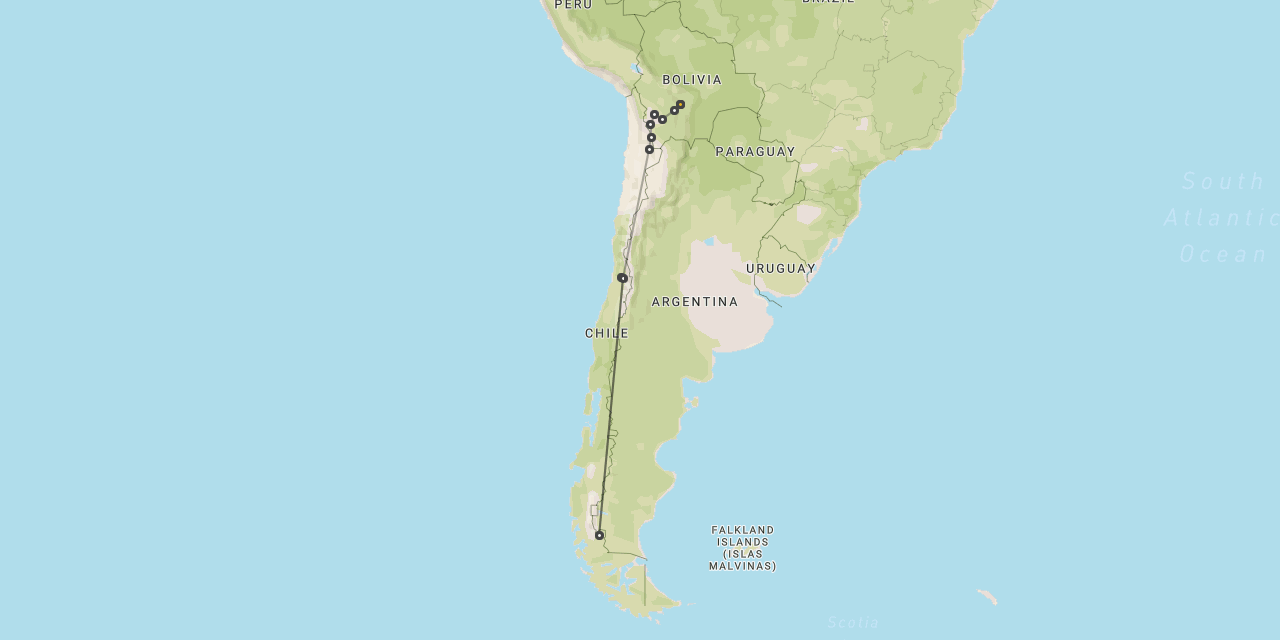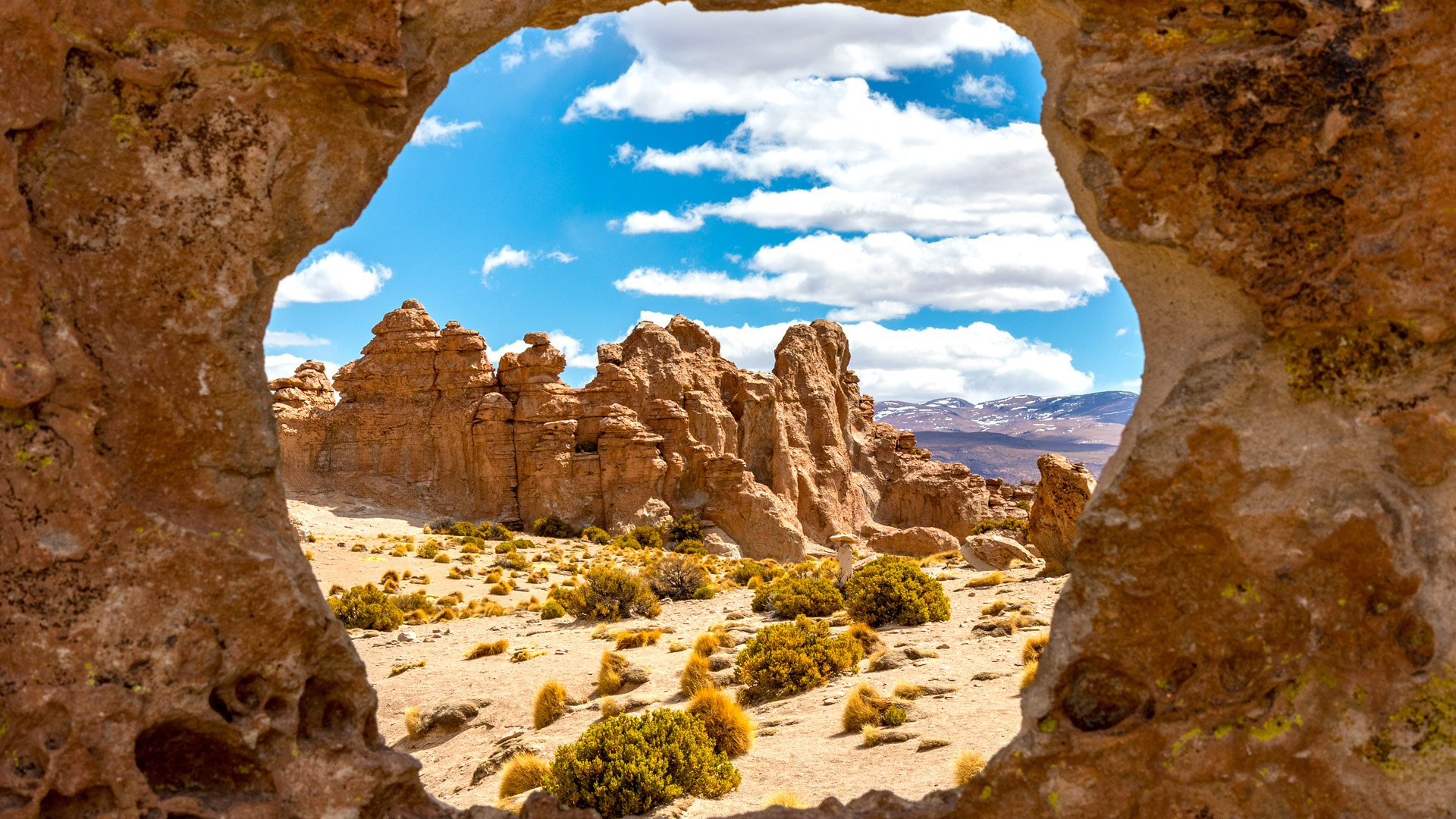
Safari to Eduardo Avaroa
Eduardo Avaroa
is a high altitude area
north from Atacama
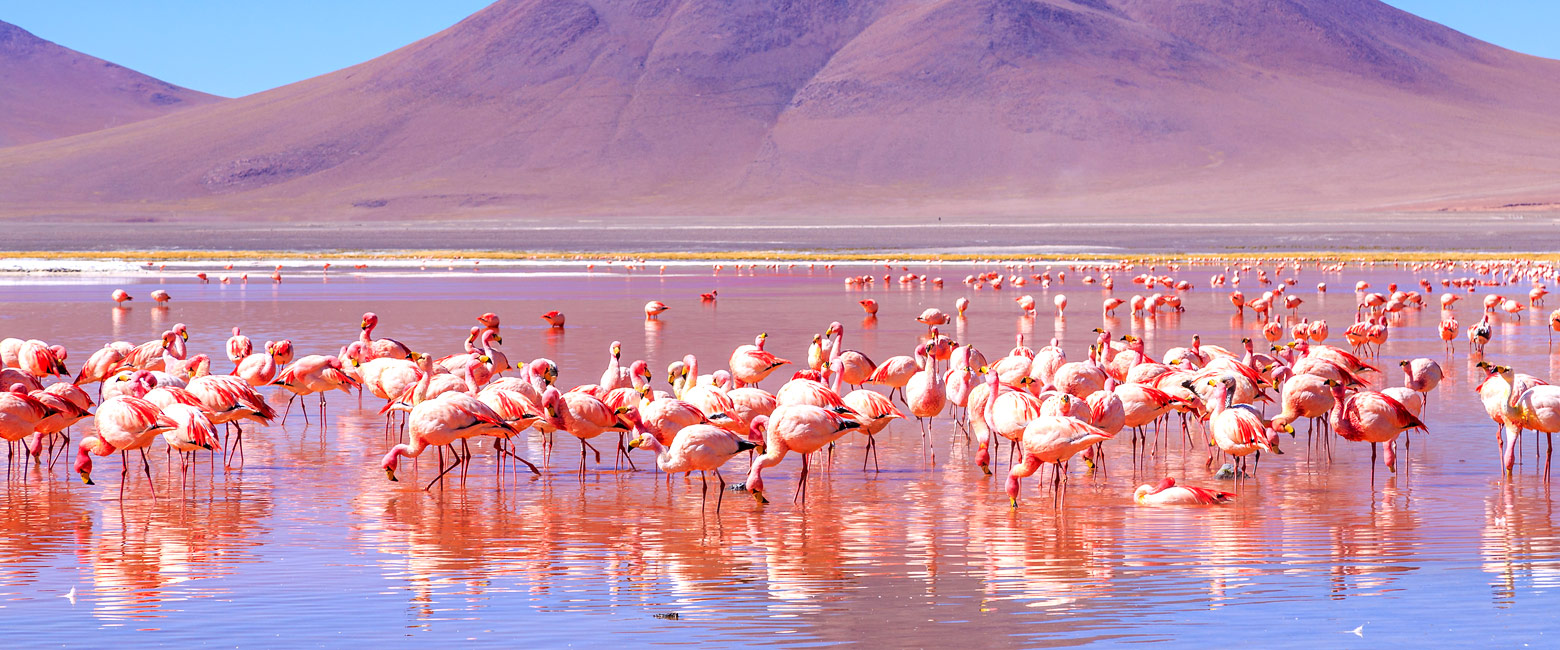
dramatic desert landscapes and beautifully coloured lakes
At 7147 square kilometres (2760 square miles), Eduardo Avaroa National Park is a relatively large and extremely scenic conservation area, set in the deep southwest of Bolivia.
The reserve was established back in 1973 in order to provide protection to some incredible high altitude scenery from the threats of overgrazing and uncontrolled mining.
The landscapes are largely comprised of barren rocky deserts, stretched between a remarkable array of volcanic peaks, 43 of which tower to over 5000 metres (16400’).
There’s very little rain year round in this area, but the run-off from snow-melt on the volcanos creates a few small networks of streams and marshes, to sustain wildlife and where local people can graze their llamas.
But more importantly, these waters are the source of an incredible collection of soda lakes, which lie tucked away in the various hidden valleys and come in an extraordinary range of shapes and colours.
These soda lakes are an extremely important habitat for three species of flamingos, which gather in vast numbers on Laguna Colorada in particular to breed around November.
The reserve lies between the famous Salar de Uyuni to the north and the popular desert outpost of San Pedro de Atacama, across the border in Chile to the south.
As such the overland route through the area is relatively popular, making this the most visited national park in Bolivia, with around 70,000 people passing through each year, up to 500 per day in peak season. So some careful planning is needed to ensure that this remains a suitably high quality wilderness experience.
The reserve is at extreme altitudes and it’s very important that you spend at least a couple of days acclimatising down in San Pedro before your visit, even if you don’t plan to do any hiking.
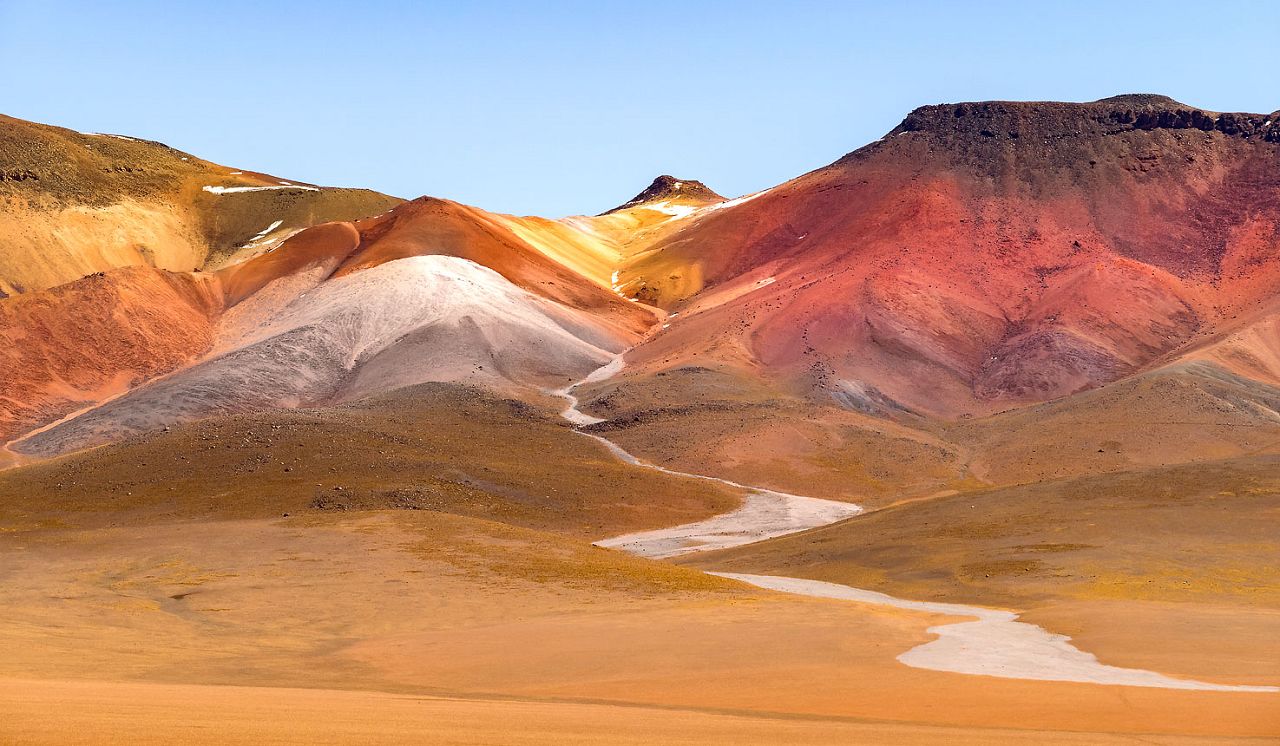
Gallery
Map
The best time to visit Eduardo Avaroa is generally considered to be during the Oct-Apr warm dry summer season.
Eduardo Avaroa has a cold desert climate, with two clearly defined seasons.
During the Oct-Apr summer conditions are usually relatively warm and very dry, with lots of sunshine. Average daytime temperatures usually reach around 19C/66F, with nighttime lows holding up around 1C/34F. Average sunshine is up around 9 hours per day, peaking in Nov-Dec.
During the May-Sep winter the weather is usually cold and very dry. Average daytime temperatures usually manage to reach around 14C/57F, with nighttime lows plunging to around -11C/12F, with regular frosts and snow cover at all altitudes.
Average sunshine remains high at around 8 hours per day.
Getting there
The only way to access Eduardo Avaroa National Park is by means of a private guided overland safari, usually when travelling between Santiago in Chile and La Paz in Bolivia or Lima in Peru.
From Santiago we first fly north to San Pedro de Atacama, where we need to spend at least two nights for altitude acclimatisation. From there we drive north, across the border, through Eduardo Avaloa and on to the remarkable Salar de Uyuni. From there we optionally swing by the Sajama and Lauca areas for some wildlife viewing, before either heading north to La Paz, or down to the coast and out via Lima in Peru.
Sometimes we do Santiago to Santiago, starting and ending in San Pedro de Atacama, driving up through Eduardo Avaloa to Salar de Uyuni, where we stay for a few nights, before returning back to San Pedro on a slightly different route.
Where to stay
When travelling through this area we usually look to spend at most one night at a lodge along the way. The best and most conveniently positioned property is the modest Hotel Takya del Desierto.
If that lodge is full, then rather than stay at one of the simpler options in this area, we usually push right through in a day to reach a lodge on the south side of Salar de Uyuni, such as Hotel Tayka de Piedra.
easier to traverse during the Oct-Apr warm dry summer
let us know your thoughts about Bolivia
and we will help you create the perfect trip
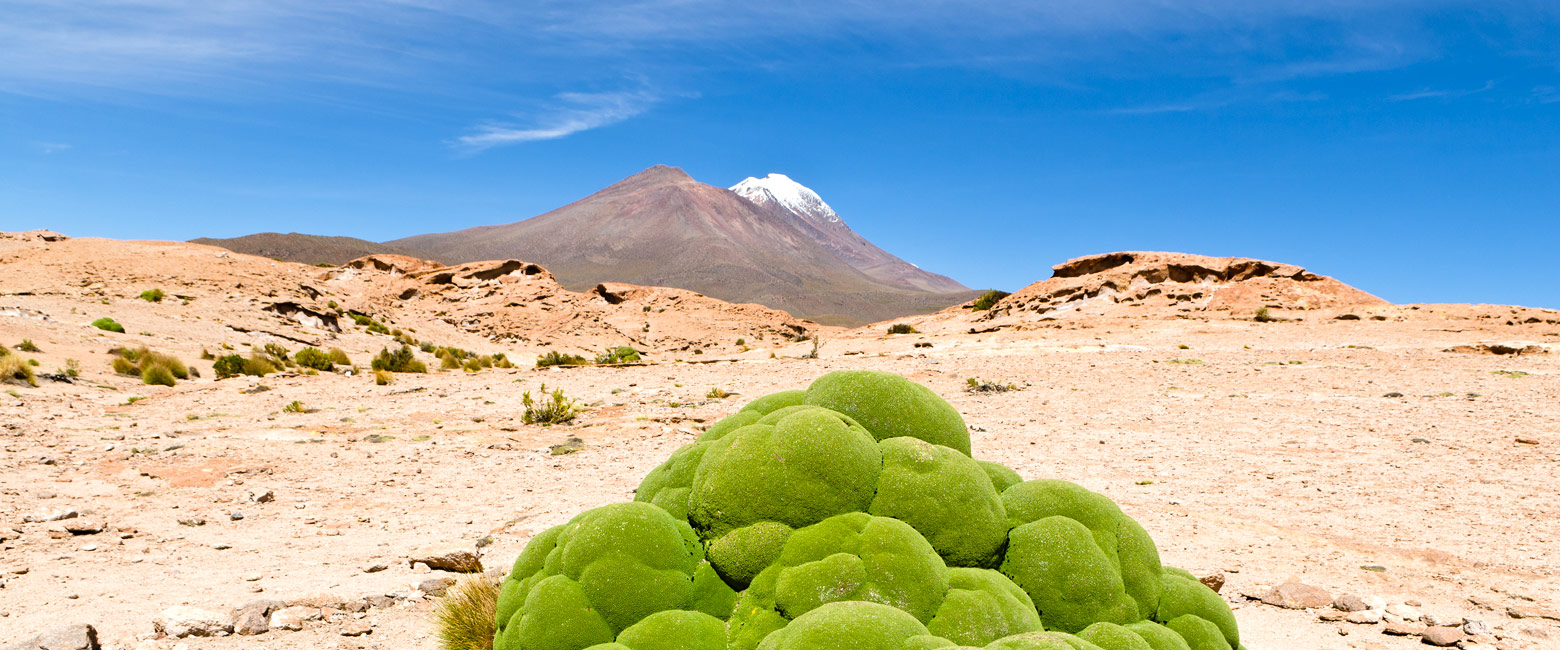
Extraordinary tailor-made adventures,
from earthy and edgy to easy and extravagant
From around USD 2500 per person, you set the ceiling
Sample Trips
Here are some of our popular trip shapes

Get started on your trip
It’s never too soon to get in touch, we are here to help with every stage of your planning.
Best Lodges
We regularly inspect and photograph all of the the best lodges, to ensure that we always recommend the most suitable options
Key Locations
Take a look around related locations. Click ‘View more’ to explore locations further afield.

















